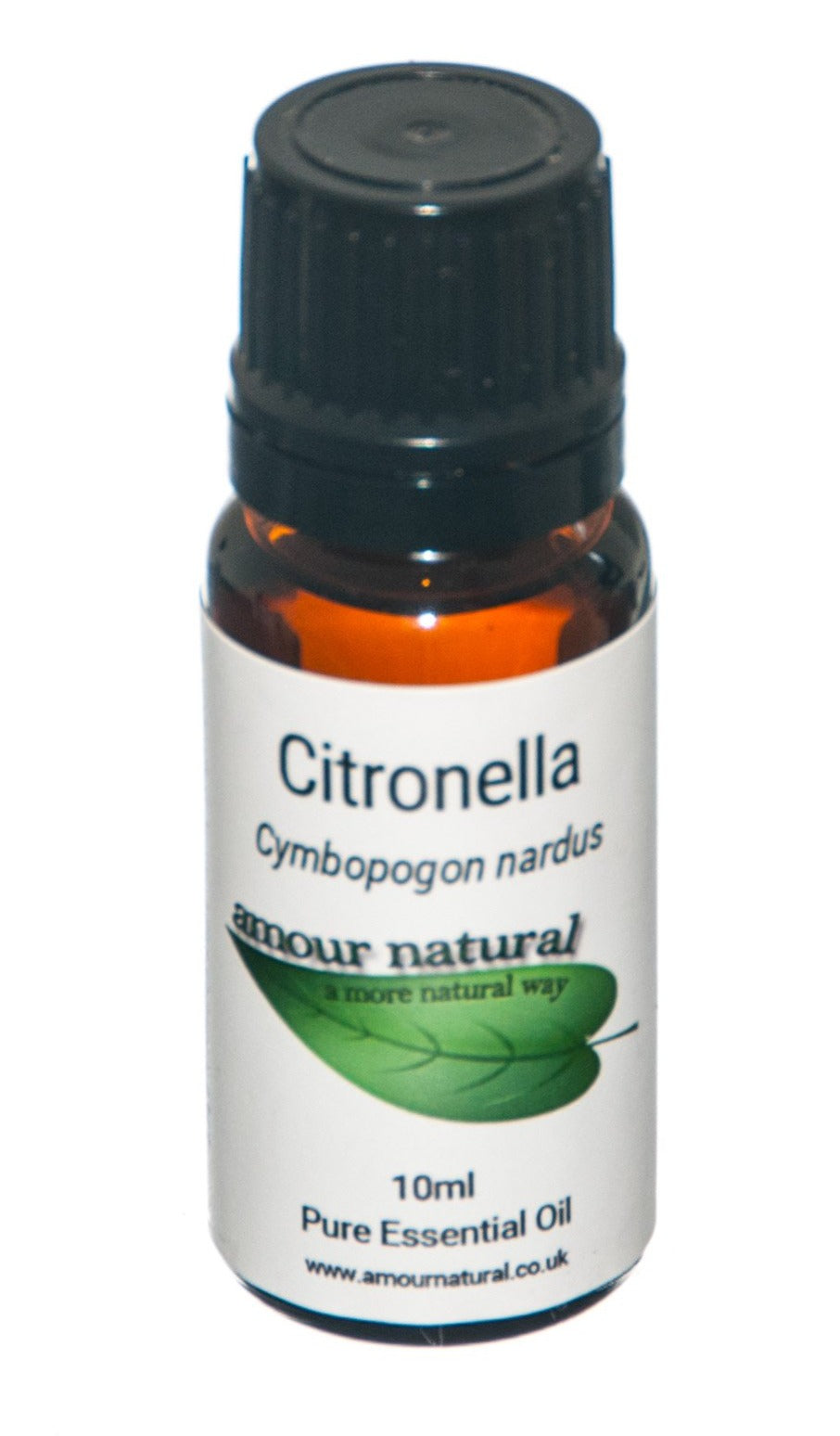
Citronella (Cymbopogon nardus)
Some suggested directions for use:
Add 6-10 drops in a bath.
Mix 5 drops with water to use in an oil burner.
Mix 6-10 drops with hot water as an inhalation.
Mix 5 drops per 10ml of carrier oil for massage.
Can be applied direct to skin problem areas (avoid if over-sensitive).
Precautions:
Do not take internally. Keep away from children and eyes.
If pregnant or have a medical condition consult with your practitioner before use. If oil gets into eyes splash out with water, seek medical advice if necessary.
If unfamiliar with essential oils seek advice from a practitioner.

Details Click to see more
Aroma: Citronella essential oil has a powerfully sweet and lemony aroma, with a herbaceous undertone.
The plant: Citronella is a grass that grows to about 3 feet tall and has long flowering leaves. It is grown mainly in Sri Lanka and Java, and also found in Central America and South America.
The extraction: The citronella grass is dried first and then steam distilled. The drying stage is important because it gives the essential oil the more favourable aroma.
Affects: Citronella essential oil is commonly used as an insect repellent. It is also antibacterial and deodorising, as well as being an affective flea spray for animals and used as a moth deterrent for clothes.
Interesting fact: Citronella oil is sometimes used in Chinese cooking to add an interesting flavour and aroma* .
History: Citronella essential oil was originally exported from Sri Lanka and the first shipment was known as Oleum Siree. The oil was originally used in candle making where it was infused in the wax, to make a candle that was an effective insect repellent.
Chemical constituents: Citronellic (acid), Borneol, Citronellol, Geraniol, Nerol (Alcohols), Citral, Citronellal (Aldehydes), Camphene, Dipentene, Limonene (Terpenes).
Blending: Citronella oil blends well with lemon, bergamot, orange, cedarwood and geranium. When blended with neroli or bergamot it is particularly softening to to hard skin patches

